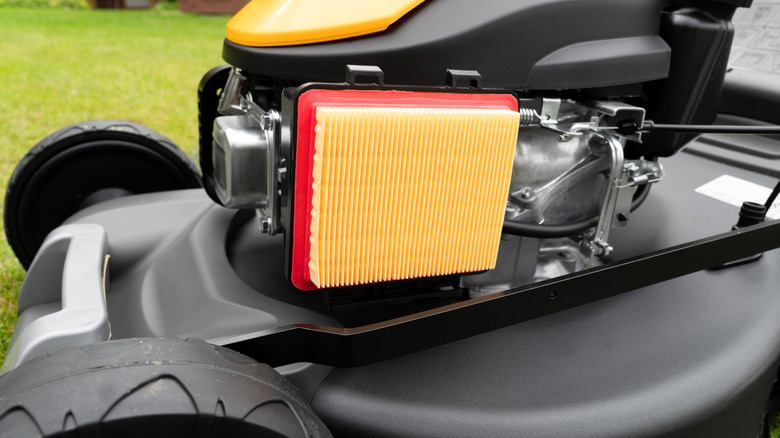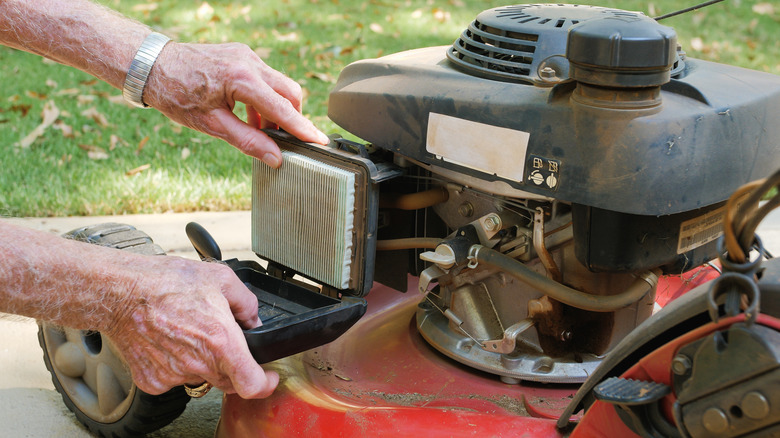Here's The Right Way To Replace Your Lawn Mower's Air Filter
The air filter is one of the most overlooked components of lawn mower maintenance. Usually hidden behind a plastic cover, it is easy to forget that it exists, but it is one of the most important aspects to prevent lawn mower damage. The air filter keeps dirt, grass clippings, and debris from getting inside the engine, where it can cause wear and tear or even permanent damage. Most manufacturers recommend changing the air filter at least once per mowing season, or more often if you live in dusty, dry conditions. The easiest way to tell if your filter needs to be changed is by paying attention to your mower. If you see black smoke coming from the exhaust or the engine keeps stalling out as you are mowing, it is time to change the filter.
Before purchasing a replacement, make sure you get the correct type of filter for your specific mower. The easiest way to check is to look in the owner's manual for the part number, but you can also check the engine type on the mower itself. You will need the manufacturer's name and the cubic centimeter (CC) displacement. This information will make sure you buy the right size and style of air filter to fit your mower. You could also just take your old filter to the store with you to guarantee the correct purchase.
How to properly install a new air filter in your lawn mower
Replacing a lawn mower air filter is a straightforward process that should not require special tools. Begin by locating the air filter housing, typically a black box near the carburetor. Most modern mowers use a simple clip or screw system to secure them. Remove the cover and lift the housing open. This should give you access to the old filter. Carefully remove it and remember the way it sits inside so you can install the new one in the same way. Before popping in the new filter, take some time and clean out debris that is inside the intake area with a brush or canned air. If you are trying to save money, you can always just clean your lawn mower's filter if it is still in good condition, especially if it is one of those foam-only filters commonly found on older mowers.
When you are ready to put in the new filter, avoid forcing it into place. It should smoothly fit without much resistance. Some combination filters with foam sleeves might need a few extra steps, like oiling, so check the manufacturer's instructions before installing the new filter. Once it is seated correctly, reattach the housing cover and make sure the clips or screws are all properly fastened. This will ensure no unfiltered air can get into the engine. Taking time to clean your lawn mower from top to bottom and giving it a complete tune-up is the best way to extend its life and maintain good fuel efficiency throughout the mowing season.

